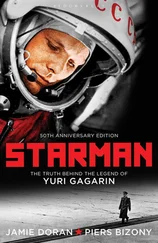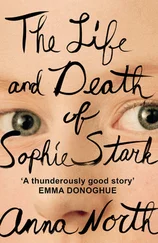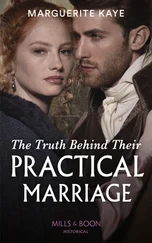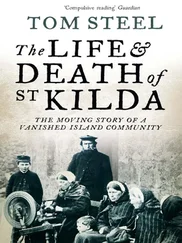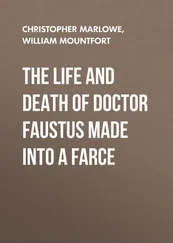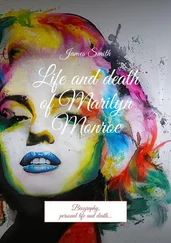Joss stayed on in Berlin for the time being. He obviously enjoyed Teutonic company. He would later socialise with the German and Austrian settlers in Kenya, and he returned to Germany on a couple of visits to Europe in the 1920s and 1930s.
The British Ambassador in Berlin, Sir Edgar Vincent, 16th Baronet D’Abernon, was an Old Etonian; his wife, Lady Helen, was the daughter of the 1st Earl of Faversham. They were a charming couple of whom Joss was very fond. Under their auspices he would come into contact with a wide range of influential and up-and-coming personalities – figures such as Stresemann, Ribbentrop and Pétain, just three whose names would be familiar to everyone in Europe by the outbreak of the Second World War. 7 The British Embassy stood only doors away from Field Marshal Paul von Hindenburg’s Presidential Palace, which had once been occupied by ‘the Iron Chancellor’ Prince Otto von Bismarck and, in 1938, became Ribbentrop’s official residence as Foreign Minister to Adolf Hitler. Prior to that appointment, Ribbentrop was to be German Ambassador to London from 1936.
When Joss met him in 1920 Ribbentrop, six years his senior, had just recently been demobilised. He was a tall, fair-haired man who ‘held his head very high’, was very arrogant and ‘inaccessible’. 8 He looked like a caricature of an English gentleman in a humorous magazine and ‘wore a bowler hat and carried an umbrella in spite of a cloudless sky’. At this time, Ribbentrop was ADC to the German peace delegation. 9 Joachim von Ribbentrop and his wife Annlies worked extremely hard at penetrating the circle of Gustav Stresemann, a statesman of first rank who was briefly German Chancellor in 1923. D’Abernon and Stresemann were close and, after Joss left Germany, together instigated the Anglo-American Treaty and the Pact of Mutual Guarantee embodied in the Treaty of Locarno in 1924. Stresemann’s son, Wolfgang, recognised the social pushiness of the Ribbentrops and how they ‘even got into the British Ambassador’s functions’. The Ribbentrop networking technique was so effective that some of their hosts, ‘Lord D’Abernon included, were surprised to find themselves entertaining their brandy merchant’ – Annlies’s father. 10
By contrast, Joss, who had no need to elevate himself socially, was an ideal candidate for D’Abernon’s needs at a sensitive time in Germany when constant communication between different countries was vital. D’Abernon was a fine diplomat with a wealth of experience. In him Joss found a man to emulate and, while he appeared to take a delight in outraging his father, he knuckled down under D’Abernon and never stepped out of line, respecting the Ambassador’s opinions on many governance matters. He also sought his views on historic battles, modern warfare, thoroughbred horses and champion tennis – subjects which were to be of continuing interest to Joss. D’Abernon’s informality endeared him to Joss and, in his friendship with the older man, he found his attention drawn to more serious aspects of life. D’Abernon had taken risks – successfully – with his own career, and Joss admired him for this adventurousness, a quality he shared. D’Abernon had at one stage been Chairman of the Royal Commission on Imperial Trade: this was to be the field that most impressed itself on Joss, whose understanding of it became almost as profound as his mentor’s. The conclusions that Joss reached at this time would enable him to argue, off the cuff, about reforms to the Congo Basin Treaties in Kenya a decade or so later. His liaison work in his capacity of Private Secretary to the Ambassador was honing his skill in retaining detail – he was becoming proficient at storing away information to use later, a habit which would pay off time after time.
In 1920 Joss accompanied his parents twice to the American Cemetery in Coblenz, in the Allied Rhineland; on 20 May they went to the Decoration Day service, then in November attended the Remembrance service. Standing on the dais, looking sombre, Joss was the youngest among dignitaries such as Monsieur Fournier, the Belgian Ambassador, Herr Delbrucke, the Austrian Ambassador, Monsieur Tirade, the French Ambassador, and Marshal Pétain. On each occasion he gazed down from the stand at the huge garden, and all that he could see stretching into the distance was row upon row of white military crosses. He would never forget this display of tragic waste.
Joss’s work involved a lot of travel from one European capital to another. Being based in the country of the vanquished provided him with a view of the war from both sides. He had witnessed the decimation of Eton’s sixth form, and Le Havre too had shown him a facet of war. Then there was the neutrality of Scandinavia: he discovered that there was also something to be learned from those who had stood back. The next three years were to provide ample time to listen to the experiences of the former enemy.
Joss’s dislike of bloodshed showed too in his reluctance to take part in blood sports. Some regarded his detachment with suspicion. According to Bettine Rundle, who knew Joss in those days, he was quite unpopular with Lord Kilmarnock’s staff on account of not joining in their hunting pursuits. However, he did play football regularly against teams formed by the various different Allied armies based in the area. Association football was particularly popular in the British Army, and on one occasion Joss captained the side that beat the American Army team. 11 He was also a very experienced polo player by this stage.
Equally, his unpopularity with his father’s staff could have been due to jealousy; they probably resented his plum job at the Embassy and wrongly assumed he had got the post purely through his father’s influence.
Whatever feelings he inspired among embassy employees, Joss enjoyed great popularity in his social life and on his travels around the capitals of Europe. The temptations in the cities were plentiful, affording men opportunities for unrestrained pleasure – in this respect Joss was very much a player. In the society in which he had been raised, sexual mores for men were liberal. It was expected of Continental grand dukes and archdukes that they should seek to indulge their sexual fantasies with mistresses rather than their wives. During the late summer, the fashionable German spas turned into the hunting grounds of the most famous courtesans of Europe. By the standards of the day Joss did nothing that others did not do, and many indulged in far more excessive behaviour.
From 1919 onwards Joss paid regular visits to Paris, where he got to know a wealthy American socialite, Alice Silverthorne, with whom he enjoyed an intermittent affair. His girlfriends were usually blondes but Alice was dark and, also unlike the majority of his lovers, close to him in age. In 1923 she married a young French aristocrat, Frederic de Janzé. Alice was bewitchingly beautiful, rich, self-willed and neurotic. ‘Wide eyes so calm, short slick hair, full red lips, a body to desire … her cruelty and lascivious thoughts clutch the thick lips on close white teeth … No man will touch her exclusive soul, shadowy with memories, unstable, suicidal’ – this was her husband’s adoring and, ultimately, prophetic verdict. 12 Alice was to become notorious as the Countess de Janzé, when she was tried for attempted murder in Paris in 1927. She had shot her lover Raymund de Trafford in the groin at the Gare du Nord. She married him five years later and they separated about three months after that. Alice and another beauty Kiki Preston – a Whitney by birth – were part of the American colony in Paris who welcomed Joss into their social circle.
The early twenties saw the Paris of Hemingway, Molyneux and Cecil Beaton. 13 Joss thrived in this glamorous climate. Beaton’s photography drew the fashionable world’s attention to the beauties of the day. Joss would get to know most of them well. One of Beaton’s ‘finds’ was Paula Gellibrand, a ‘corn-coloured English girl’ who became one of his muses. When Paula and Joss first met, she was untitled and the daughter of a major who lived in Wales. Joss’s relationship with her would surface haphazardly at distant points on the globe since she would become the wife of no less than three of his friends and, being an inveterate traveller, would appear wherever the glamorous foregathered be it Paris, Venice, New York, London or Antibes. She was tall and languid, and according to Beaton, her ‘eyelids were like shiny tulip petals … [she was] the first living Modigliani I ever saw’. 14 Ultimately Paula would happen up on Joss’s doorstep in the Rift Valley, married to Boy Long (whose real first name was Caswell), a rancher and another neighbour of Joss’s – by then Joss and Paula had been friends for fourteen years.
Читать дальше

